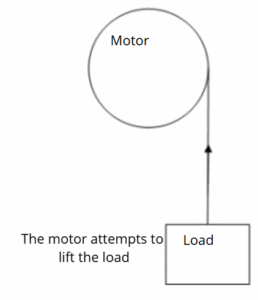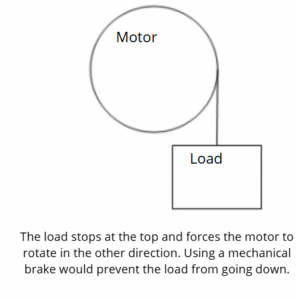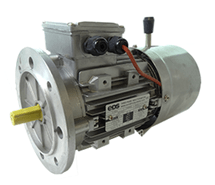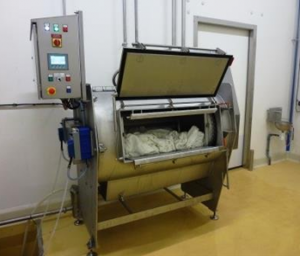When should you use a VFD?
The three-phase variable frequency drive enables the three-phase current frequency to be changed in order to control the speed of the motor. The VFD is often used with three-phase motors for gradual starting, gradual or fast braking, and for changing directions.
How to brake a motor with a VFD?
1. Coast stop:
With free braking, the VFD stops sending current to the motor which then turns off after a certain time depending on the load.
2. Mechanical braking (only for motors with mechanical brake):
Some motors have a mechanical brake (mainly for using hoist, load lifting systems…) to prevent the load from revolving the motor when it is not operating.



Motor with an electromechanical brake: safety brake.
3. Direct current injection braking:
To quickly stop the motor, DC voltage is injected into the stator windings.
4. Dynamic braking with a resistor:
The motor can act as a generator when the load driven is heavy and the inertia is high (for instance, for a carousel, an industrial washing machine or with an inertia wheel). The motor creates an electromagnetic force which could damage the control board and cause the VFD to fail.
In this situation, you have to connect a resistor to the VFD.
The resistor dissipates the energy created by the motor without damaging the VFD.
How to choose a braking resistor?
- First, you have to make sure the VFD can receive a brake resistor, otherwise, you will need to add an energy dissipation external module.
- You have to estimate the energy production time in comparison to the operation time.
For instance:
For an industrial washing machine drum (of 11 kW) which operates for a 3 h cycle and then is driven by inertia for 3 min (after the motor power cut). During the stop phase, the drum acts as a current generator for 3 min out of the 180 min operation time, which represents 1.6 % of the time. Therefore, you will need a brake resistor which will dissipate 1.6 % of the energy of the 11 kW, being a 180 W resistor.

For a 30 kW carousel which operates during 2 min and acts as a generator during 30 s, the energy must be dissipated for 30 s over the 150 s cycle, which represents 20 % of the time. For this 30 kW carousel, you will need a 20 % x 30 kW = 6 kW resistor.

- Finally, you must set up the resistor on an energy dissipation system (radiator, diffuser), and avoid warm and/or enclosed places.


 Blog
Blog
